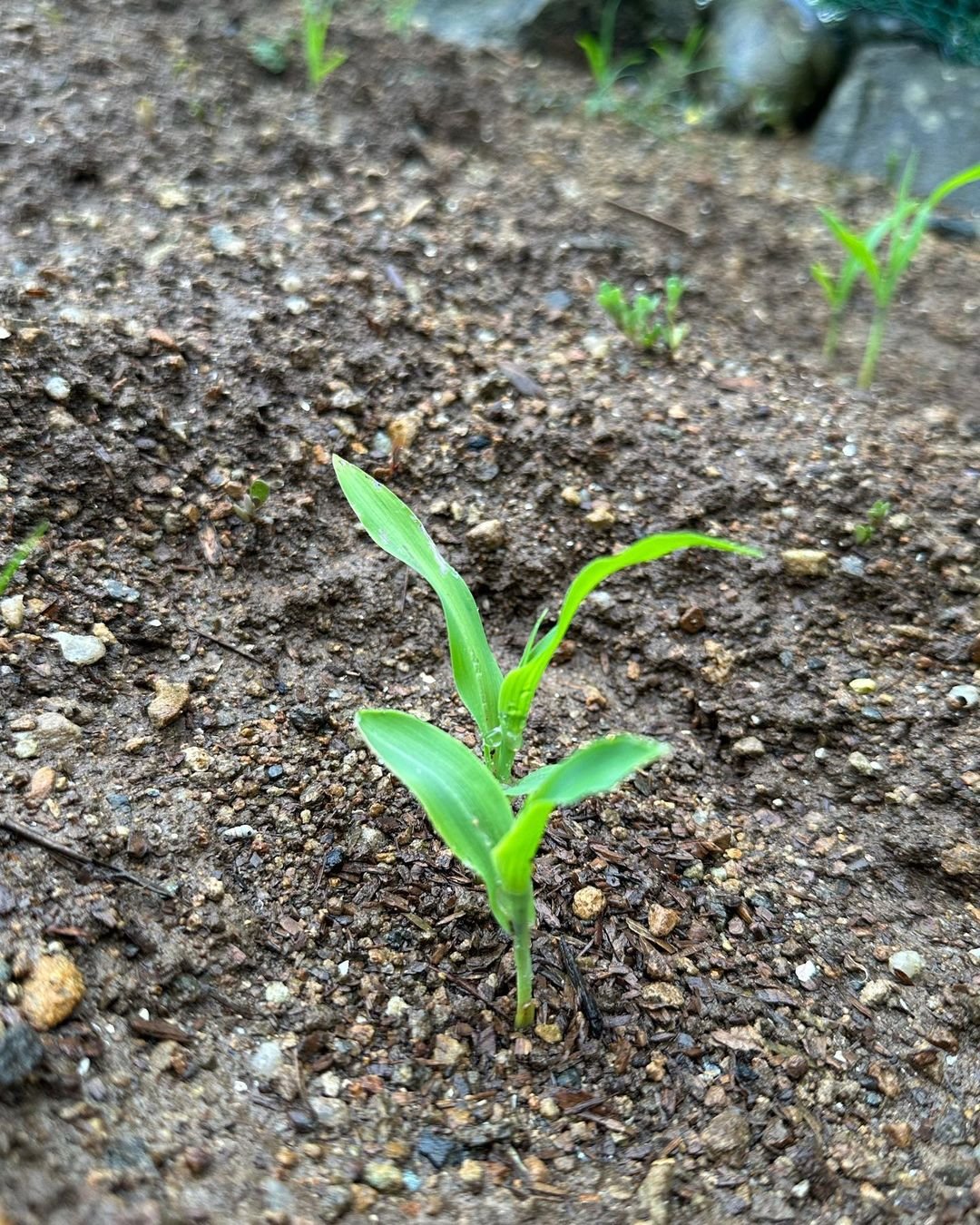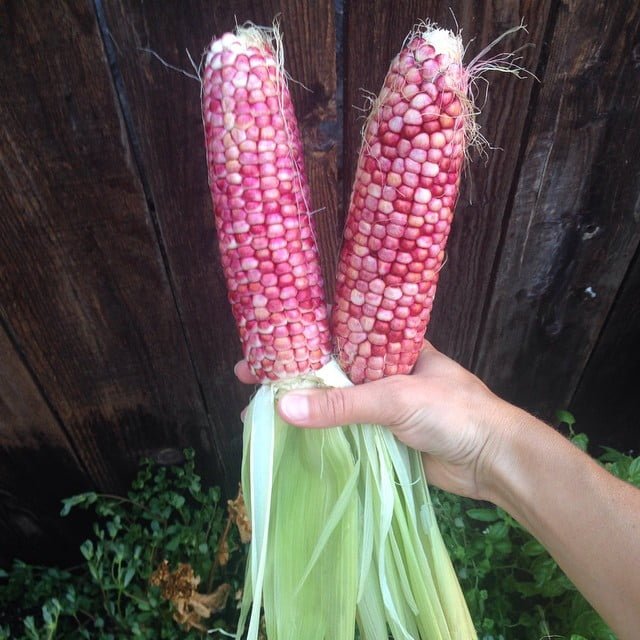Learn essential tips for growing Red Corn and achieving a bountiful harvest. Discover planting techniques, care strategies and harvesting advice to maximize your crop yield and enjoy the vibrant beauty of red corn in your garden.
Red corn is a beautiful and tasty twist on regular corn. It’s fun to grow and can add color to your garden and meals. This guide will help you grow red corn successfully, from planting to harvest.
Here’s a detailed short information chart about red corn:
| Red Corn | Information |
|---|---|
| Botanical Name | Zea mays |
| Common Name | Red corn, Bloody butcher corn |
| Appearance | Large, tall stalks with deep red to reddish-brown kernels |
| Plant Type | Annual |
| Zones | Typically grows well in USDA Zones 3-9 |
| Sun Exposure | Full sun |
| Soil Type | Well-drained, fertile soil |
| Watering | Regular watering; keep soil consistently moist |
| Fertilization | Benefits from balanced fertilizer application, especially nitrogen-rich |
| Nutritional Value | High in carbohydrates, dietary fiber, vitamins (e.g., vitamin C) and minerals (e.g., magnesium), contains antioxidants like anthocyanins |
| Growing Conditions | Warm temperatures (60-95°F), full sun; prefers loose, well-drained soil |
| Height/Spread | Typically grows 6-10 feet tall with a spread of 2-3 feet |
| Pests | Susceptible to common corn pests like corn earworms, aphids, and cutworms; can be managed with organic or chemical insecticides as needed |
| Uses | Culinary: Cornbread, tortillas, salads, salsas; Decorative: Fall decorations, ornamental corn; Traditional uses in Native American rituals and ceremonies |
| Health Benefits | Contains anthocyanins with potential anti-inflammatory and cardiovascular benefits; good source of antioxidants |
| Popular Varieties | – ‘Bloody Butcher’: Deep red kernels, historical significance |
| – ‘Cherokee Long Ear’: Red kernels, culturally significant among Native American tribes |
What is Red Corn?

Red corn, also known as “bloody butcher corn“, is a type of corn with deep red kernels. It’s an heirloom variety that’s been grown for centuries. Red corn has a rich, nutty flavor and can be used just like regular corn.
Choosing the Right Variety
There are a few types of red corn you can grow:
- Bloody Butcher: An old variety with dark red kernels.
- Red Dent: A hybrid with reddish-orange kernels.
- Ruby Queen: A sweet corn variety with ruby-red kernels.
Pick the one that fits your taste and growing conditions best.
When to Plant Red Corn
Red corn likes warm soil, so plant after the last frost in spring. The soil should be at least 50°F (10°C). In most places, this is around late spring or early summer.
You can check your local frost dates and soil temperatures on the National Weather Service website. This will help you plan the best time to plant.
Preparing the Soil

Red corn needs rich, well-draining soil to grow well. Here’s how to prepare your soil:
- Test your soil: Use a soil testing kit to check the pH and nutrient levels.
- Adjust the pH: Red corn likes soil with a pH between 6.0 and 6.8. Add lime to raise pH or sulfur to lower it if needed.
- Add compost: Mix in plenty of compost to improve soil structure and add nutrients.
- Loosen the soil: Dig or till the soil to a depth of about 12 inches (30 cm).
Planting Red Corn

Follow these steps to plant your red corn:
- Make rows: Space rows 30-36 inches (75-90 cm) apart.
- Plant seeds: Plant seeds 1-2 inches (2.5-5 cm) deep and 4-6 inches (10-15 cm) apart in the rows.
- Water well: Give the newly planted seeds a good watering.
- Plant in blocks: For better pollination, plant corn in blocks of at least 4 rows instead of one long row.
Caring for Your Red Corn

To help your red corn grow strong and healthy:
- Water regularly: Corn needs about 1 inch (2.5 cm) of water per week. Water deeply to encourage deep roots.
- Fertilize: Use a balanced fertilizer when the plants are about knee-high and again when they start to produce tassels.
- Weed control: Keep the area around your corn free of weeds. They compete for water and nutrients.
- Mulch: Add a layer of mulch around the plants to keep moisture in and weeds down.
- Support: In windy areas, you might need to stake your corn to keep it upright.

Dealing with Pests and Diseases
Red corn can face some challenges as it grows. Here are common issues and how to handle them:
- Corn earworms: These pests eat the kernels. Use integrated pest management techniques to control them.
- Fungal diseases: Keep leaves dry by watering at the base of plants. Remove any infected plants quickly.
- Birds: Birds love corn! Use netting or scare devices to protect your crop.
- Raccoons: These clever animals can destroy a corn crop. Consider electric fencing if raccoons are a problem in your area.
Harvesting Your Red Corn

Knowing when to harvest is key to getting the best flavor from your red corn. Here’s how to tell:
- Check the tassels: When the tassels at the top of the ear turn brown and dry, the corn is nearly ready.
- Feel the kernels: Gently squeeze a kernel. If it spurts a milky liquid, it’s ready to pick.
- Look at the kernels: They should be plump and filled out to the tip of the ear.
To harvest, grab the ear and pull down while twisting. It should come off easily when it’s ripe.
Storing and Using Red Corn

Red corn is versatile and can be used in many ways:
- Fresh eating: Cook and eat it right away for the best flavor.
- Freezing: Blanch the corn, cut it off the cob and freeze for later use.
- Drying: Let the corn dry on the stalk for use as popcorn or ground into cornmeal.
- Decorating: The colorful ears make great fall decorations.
Tips for Success
Here are some extra tips to help you grow great red corn:
- Rotate crops: Don’t plant corn in the same spot year after year. This helps prevent disease buildup in the soil.
- Companion planting: Grow beans and squash with your corn. This traditional Native American method, called the “Three Sisters,” can improve soil health and yield.
- Save seeds: Red corn is often an heirloom variety, so you can save seeds for next year’s planting.
- Be patient: Red corn often takes longer to mature than yellow sweet corn.
- Enjoy the process: Growing red corn is not just about the harvest. Enjoy watching these tall, beautiful plants grow in your garden.
Growing red corn can be a rewarding experience. It’s a bit different from growing regular sweet corn, but the unique color and flavor make it worth the effort. With proper care and attention, you can enjoy a bountiful harvest of this beautiful crop.
Remember, every garden is unique. Don’t be afraid to experiment and learn what works best in your specific conditions. Happy growing!
Pingback: Growing Red Corn: Essential Tips for a Bountifu...